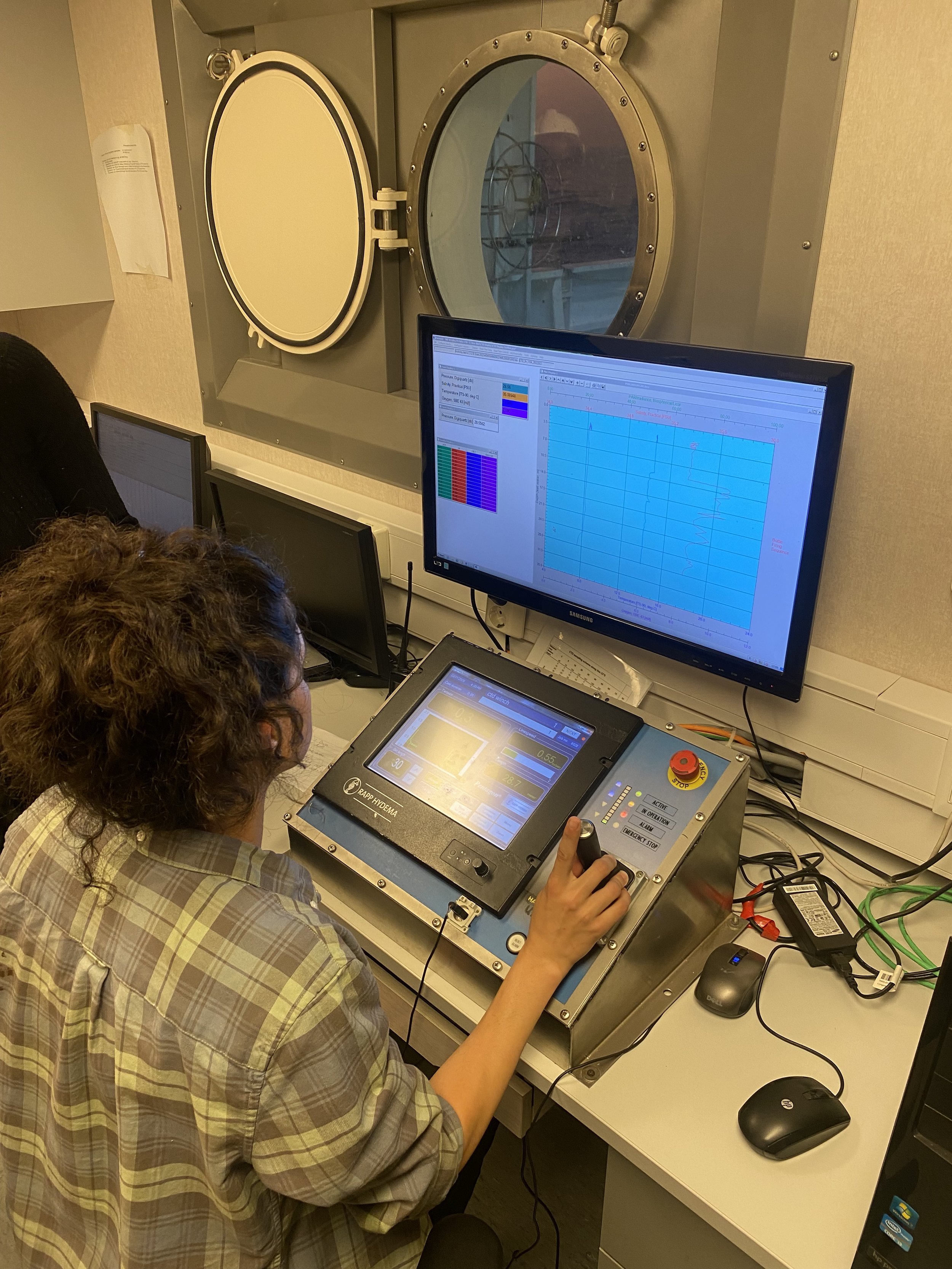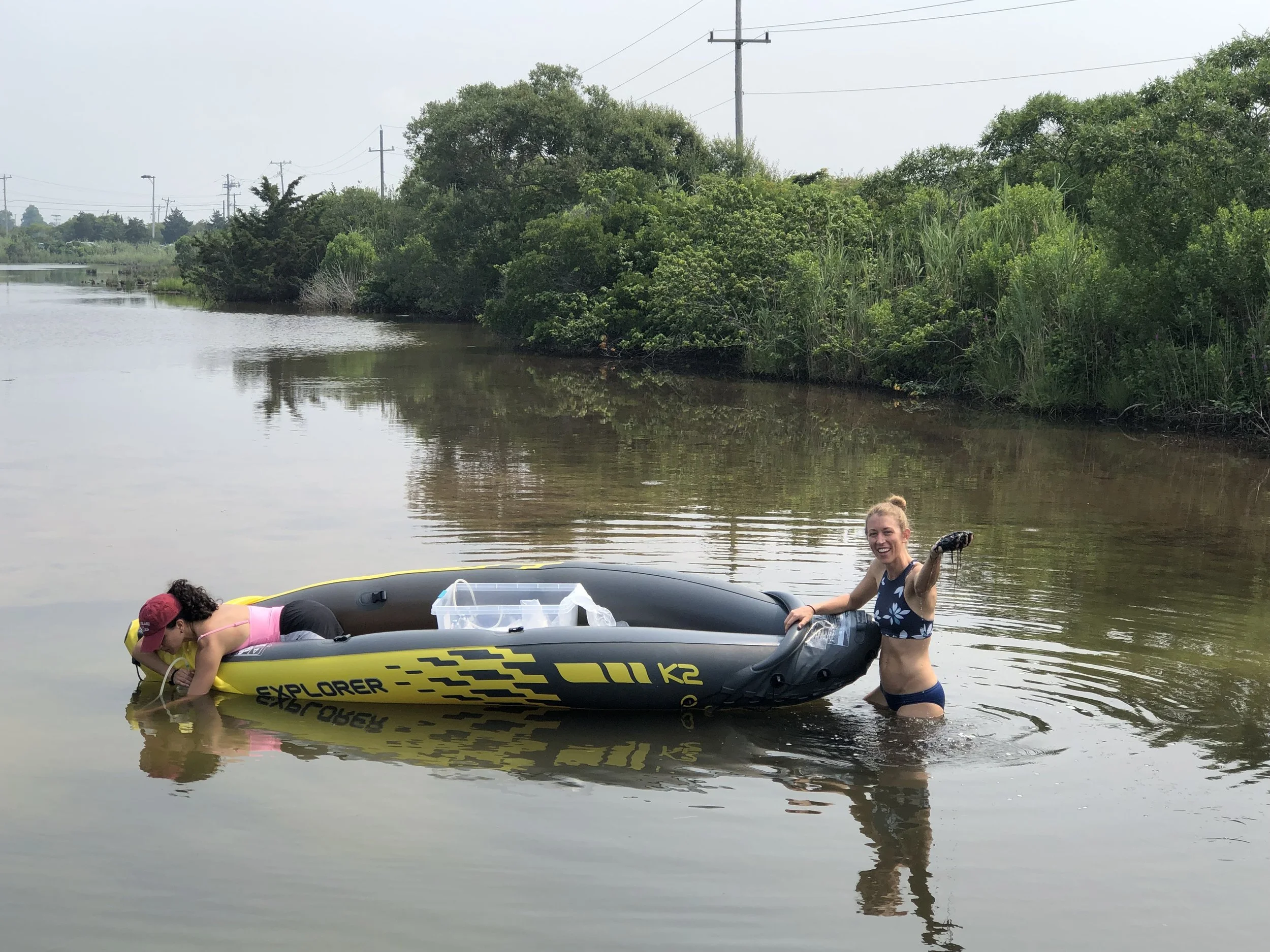As a PhD student, I was fortunate to partake in various field work experiences. These trips offered valuable geochemical insights and unveiled the complexities of Earth's geological processes.
I traveled to diverse locations worldwide, each with its unique geological narrative. These expeditions were planned to fulfill our research objectives. Immersed in these environments, I witnessed the marvels of nature and comprehended the role geochemistry plays in understanding our planet.
Field Work
Research Vessel Mirabilis
Benguela Upwelling System, Namibia
Ministry of Fisheries and Marine Resources of Namibia
Regional Graduate Networks of Oceanography Spring 2022
The Benguela Upwelling System (BUS) off the coast of Namibia experiences an oxygen minimum zone due to physiological and biological ocean processes.
I participated in the RGNO 2022 course in Swakopmund, Namibia. The course took place over three weeks, including one week at sea.
In collaboration with the Ministry of Fisheries and Marine Resources of Namibia, we set off to sample the northern BUS for a suite of things including anoxygenic photosynthetic bacteria.
The R/V Mirabilis is equipped with lab space, a multi-corer for sediment sampling, and a CTD Rosette for water column sampling.
R/V Mirabilis docked in Walvis Bay, Namibia
Setting up multi-corer for deployement
Multi-corer coming up from sampling. Alas if one looks closely theres only seawater in the tubes.

Myself and Katie Crowley (Marine Biological Laboratory at Woods Hole) at SANUMARC getting supplies for the research cruise.

Crew and scientists at the R/V Mirabilis deploying the PAR logger.

Multi-corer used to sample ocean sediments.

Setting up the multi-corer for deployment.

Had the privilege to man the CTD and decide which depths to sample

Secilia Shilongo (NATMIRC scientist) guiding me through the CTD cast operations.

Peristaltic pump filtration that Katie and I assembled.

Assembling the filter holders.

Organisms that live in 5 liters of seawater on a glass fiber filter.

Secilia teaching me how to make pap. 10/10 would eat again.

Last night out at sea. Celebrating a successful cruise with a Namibian Braai.
Trunk River Lagoon
Falmouth, Massachusetts
Summer 2021 I began collaborating with Dr. Emil Ruff at the Marine Biological Laboratory in Woods Hole, MA on green sulfur bacteria metabolism. This collaboration brought to the table researchers from different areas of expertise including microbiologist and biogeochemist Dr. Molly Moynihan and aquatic microbiologist Katie Crowley. We aim to understand the dynamics of green sulfur bacteria (GSB) in constrained brackish systems.
Sampling the bloom in Trunk River.
Suspended green sulfur bacteria bloom in Trunk River Lagoon
I am interested in understanding the biomarker signatures of GSB and the role hydrogen sulfide plays in early diagenesis.
In the summer, Trunk River hosts ephemeral blooms of GSB and as the bloom collapse we observe microbial mat formation until ultimately they cease.
This system provides an analog (albeit not perfect due to it being an enclosed basin) to ancient euxinic oceans. Elucidating the environmental factors involved in deposition and preservation of GSB biomarkers can help unravel ancient photic zone euxinia.
Bottles filled with bloom sampled from the river.

Push core sampled from Trunk River Lagoon.

Push core sampled from Trunk River Lagoon.

Three liters of bloom water filtered on a glass fiber filter.

Microbial mat sampled from TRL

Microbial mat attached to poles submerged in the river.

Sampling from Trunk River Lagoon. Yellow water is an active Chlorobi bloom.

With Katie Crowley enjoying the smell of hydrogen sulfide.
Research Vessel Falkor
Eastern Tropical North Pacific Oxygen Minimum Zone
R/V Falkor taken from the Schmidt Ocean Institutes’ website
The summer before I started graduate school, filled with anticipation and excitement, I eagerly embarked on my first-ever field work experience to the captivating Eastern Tropical South Pacific (ETNP) oxygen minimum zone (OMZ) near the breathtaking shores of Baja California.
During my time collaborating with Dr. Ryan Woosley, we engaged in a project involving the sampling and processing of seawater in order to obtain high-resolution alkalinity and pH measurements.
CTD Rosette during active cast sampling the water column
Our approach included the implementation of spectrophotometric techniques, where we relied on the use of m-cresol purple as an indicator for pH measurements. To determine alkalinity, we utilized the Dosimat titration system. These advanced methodologies contributed greatly to the accuracy and precision of our findings, paving the way for further insights into the intricate characteristics of seawater chemistry.
Suspended CTD Rosette
Photographs in this section taken by Marley Parker of ML Parker Media unless otherwise stated

Syringe filtering seawater.

Set up for pH measurements using spectrophotometric techniques.

MilliQ water is always important when doing lab work on a boat surrounded by seawater.

CTD control room.








